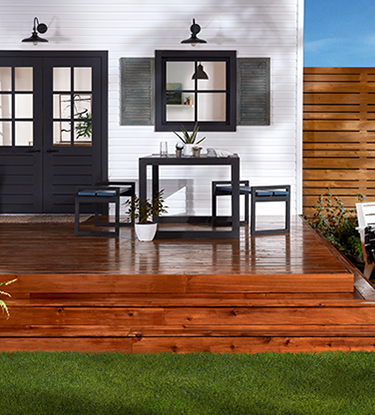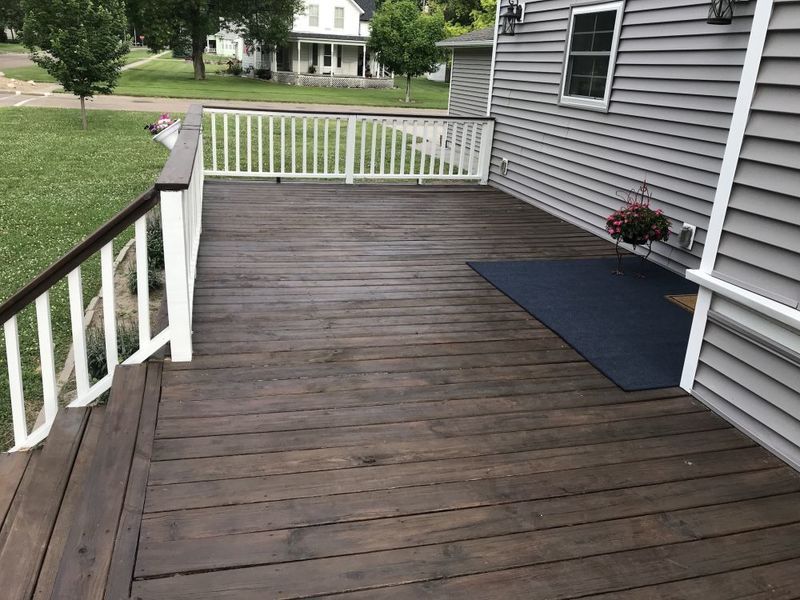Deck Staining Radiance: Boost Your Outdoor Living Area
Picking the Right Discoloration for Your Fencing: Tips and Factors To Consider
When it comes to maintaining and boosting the appearance of your fencing, picking the appropriate stain is critical. We will certainly discover the various kinds of fencing stains, elements to consider before choosing a stain, ideas for preparing your fencing for discoloration, and the differences between oil-based and water-based discolorations. In addition, we will delve right into picking the right tarnish color to match your fence and enhance your outdoor space.
Understanding Different Kinds of Fencing Stains

On the other hand, water-based spots are made from acrylic or latex and provide an extra subtle color to the wood. Water-based spots are less complicated to cleanse up and have a much faster drying time compared to oil-based spots.
Selecting between water-based and oil-based discolorations relies on numerous variables, consisting of individual choice, the preferred look, and the level of upkeep called for. Oil-based discolorations are advised for surround high-traffic locations or those regularly subjected to severe climate condition. deck staining. Water-based discolorations, on the various other hand, are a preferred selection for fence houses where look and convenience of use are very important
Understanding the differences in between oil-based and water-based spots helps home owners make an educated decision when selecting the ideal discolor for their fence. Thinking about the specific demands of the fence, such as its location, direct exposure to sunlight, and preferred aesthetic, will certainly ensure that the selected stain offers resilient protection and boosts the total charm of the fencing.
Elements to Take Into Consideration Before Picking a Stain

Various types of wood absorb stains differently, resulting in varying levels of color strength and resilience. In addition, certain timbers might be more vulnerable to issues like rot or insect problem, which might impact the selection of stain to preserve the fencing and protect.
The environment and weather in your area should also be taken into consideration. You may require a tarnish that supplies added protection versus dampness and UV rays if you live in an area with harsh winters months or high moisture. Similarly, if your fence is subjected to guide sunlight for long durations, a discolor with UV preventions can assist protect against fading and staining.
Lastly, it is necessary to consider your wanted visual. Various stains offer various shades and surfaces, enabling you to personalize the appearance of your fence (deck staining). Think about the total design and style of your building, in addition to any local policies or homeowner organization standards that might determine the appropriate stain colors
Tips for Preparing Your Fence for Staining
Cleansing the fence is an important action as it removes dirt, grime, and any type of previous finishings that might interfere with the discoloration procedure. Rub the surface carefully, paying extra attention to areas with stubborn spots or mold and mildew.
This action is vital as staining a wet or wet surface can lead to inadequate adhesion and an irregular finish. Ensure that the fencing is entirely dry prior to proceeding with the discoloration process.
Prior to staining, examine the fence for any problems, such as loosened boards or nails. This item aids to open the timber pores, enabling the tarnish to pass through extra properly and evenly.

Comparing Oil-Based and Water-Based Discolorations
When choosing a tarnish for your fence, it is important to compare the features and benefits of water-based and oil-based stains. Both sorts of stains have their very own benefits and factors to consider, so it is essential to understand the distinctions in between them.
Oil-based spots are recognized for their resilience and resistance to tear and use. Furthermore, oil-based spots tend to last longer than water-based stains, making them a preferred choice for fencings.
On the various other hand, water-based spots are a lot more eco-friendly and less complicated to tidy up. They have a lower VOC (unpredictable natural compound) web content, which indicates they launch less dangerous fumes into the air. Water-based stains also completely dry much faster, permitting a quicker application and much less downtime. discover here Nevertheless, they may not offer the exact same level of security as oil-based stains, especially in rough climate condition.
Ultimately, the option between oil-based and water-based discolorations relies on your details demands and choices. When making your choice, consider variables such as toughness, ecological effect, and simplicity of application. Consulting with an expert or seeking recommendations from experts can likewise assist make certain that you choose the right discolor for your fencing.
Picking the Right Spot Shade for Your Fencing
The option of a proper discolor shade for your fencing is a vital aspect of boosting its aesthetic charm and enhancing the total design of your outdoor space (fence staining). The right tarnish shade can change a plain, ordinary fencing into a striking prime focus that includes deepness and personality to your home
When selecting a stain shade for your fencing, it is very important to take into consideration the design and architecture of your home. If you have a conventional or traditional style home, earthy tones such as browns and neutrals can produce a warm and welcoming appearance. On the various other hand, if you have a contemporary or modern-day home, you may consider choosing for vibrant and vivid shades that make a declaration.
An additional element to take into consideration is the natural environments of your property. If you have a great deal of greenery, a tarnish shade that enhances the natural landscape, such as environment-friendlies or crimsons, can create a cohesive and unified look.
Additionally, it deserves considering the maintenance required for various discolor shades. Lighter colors tend to show dust and use more easily, while darker colors can conceal blemishes and call for much less frequent touch-ups.
Eventually, the selection of stain color for your fencing must show your individual style and choices - fence staining and sealing. Take the time to seek advice from and explore various choices with experts if required, to guarantee that you select the excellent discolor color that enhances the elegance and allure of your fencing
Conclusion
In conclusion, when it comes to choosing the ideal tarnish for your fence, it is vital to recognize the different types of spots available and think about factors such as resilience and desired appearance. Choosing the appropriate tarnish color can enhance the general aesthetics of your fencing.
We will certainly discover the various types of fence discolorations, factors to take into consideration prior to picking a tarnish, ideas for preparing your fence for discoloration, and the differences between water-based and oil-based spots.Distinguishing in between water-based and oil-based stains is essential when recognizing different kinds of fence stains. Water-based spots are less complicated to cleanse up and have a much faster drying time compared to oil-based spots. In addition, oil-based discolorations have a tendency to last longer than water-based spots, making them a prominent choice for fences.
In final thought, when it comes to selecting the appropriate stain for your fencing, it is crucial to understand the different kinds of spots offered and take into consideration variables such as sturdiness and desired look.